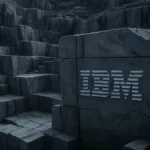Researchers have discovered an extraordinary type of bacteria that creates electrical currents on the ocean floor.

Three years ago, researchers at Aarhus University in Denmark discovered unexplained electric currents in the seabed.
While they speculated that the electric currents might run between different bacteria via a joint external wiring network, they’ve now found that the whole process takes place inside bacteria that are one centimetre long.
A microscopic analysis showed a hitherto unknown type of long, multi-cellular bacteria that was always present when scientists measured the electric currents. Each one of these ‘cable bacteria’, 100 times thinner than a human hair, contains a bundle of insulated wires. These conduct an electric current from one end to the other, making up a kind of live cable.
“The incredible idea that these bacteria should be electric cables really fell into place when, inside the bacteria, we saw wire-like strings enclosed by a membrane,” says Nils Risgaard-Petersen of Aarhus University.
In an undisturbed area, says the team, there are tens of thousands of kilometers of cable bacteria living under a single square meter of seabed.
Unlike all other known forms of life, they maintain efficient combustion down in the oxygen-free part of the seabed. All that’s needed is for one end of the bacterium to reach the oxygen which the seawater provides to the top few millimeters of the seabed.
The combustion is a transfer of the electrons of the food to oxygen, which the bacterial inner wires manage over centimeter-long distances – although small disturbances can lead to fatal ‘cable breakage’.
“Such unique insulated biological wires seem simple, but with incredible complexity at nanoscale,” says PhD student Jie Song.






